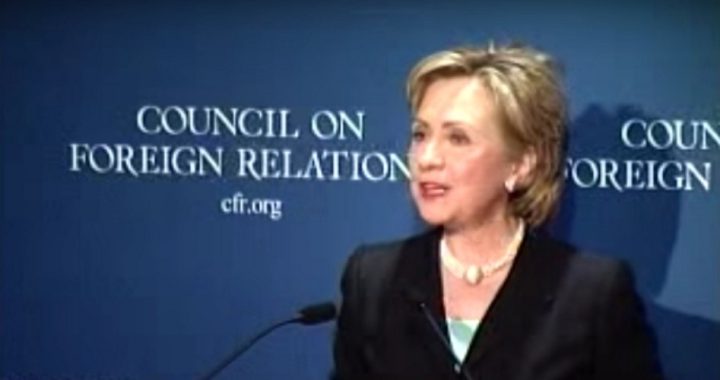
Hillary Clinton attacked Donald Trump, saying that she plans to “build bridges, not walls,” referencing the latter’s promise to build a wall along the U.S.-Mexican border.
As it turns out, though, Clinton was for a wall on the southern border before she was against it.
“There isn’t any sensible approach except to do what we need to do simultaneously: you know, secure our borders with technology and personnel, physical barriers if necessary in some places,” she said in 2006 during a speech to the Council on Foreign Relations (CFR).
In fact, Clinton more than spoke about the need for “physical barriers” between the United States and Mexico; and as a senator she voted for their construction.
The bill, the Secure Fence Act of 2006, called for the construction of 700 miles of barriers to be built on the country’s border with Mexico.
Clinton was joined by 25 other Democratic senators in support of the measure and it was eventually signed into law by President George W. Bush.
When asked about the apparent hypocrisy by Jorge Ramos in January 2016, Clinton was forced to admit that she literally voted in favor of building a barrier, not a bridge, between the United States and Mexico.
“Well, I voted for border security and some of it was a fence,” Clinton said. “I don’t think we ever called it a wall. Maybe in some places it was a wall.”
That’s the sort of admission that shouldn’t go without challenge, but as the Democratic Party is the de facto management of the mainstream media, Clinton’s contradiction will go unmentioned.
Not by her opponent, however.
At a campaign stop in Wisconsin in August, the Republican presidential hopeful called out Clinton for her wall waffle.
“We’re gonna have strong borders. We’re gonna have a wall — a big, powerful wall. You know that Hillary Clinton wanted a wall, a number of years ago. She wanted a wall.”
Even the left-leaning Politifact pointed out the problem of Clinton’s vote to wall off Mexicans from the United States.
Alex Nowrasteh, an immigration policy analyst for the libertarian Cato Institute said the semantic differences are irrelevant.
“Whether it’s a wall or a fence, it blocks people,” Nowrasteh said. “Quibbling between a wall and fence — it’s just a word game at that point.”
He noted a 700-mile barrier is substantial. Indeed, it represents about one-third of the length of the border.
“Maybe it’s fair to say she doesn’t support a wall along the entirety but she certainly supported a barrier along a large portion of it,” Nowrasteh said.
Jon Feere, a legal policy analyst at the Center for Immigration Studies, agreed. The center favors reduced immigration.
“It’s clear that, at one point, Clinton supported a secure border that includes physical barriers,” Feere said.
As it stands today, of the 702 miles of fence, only 36 miles of it have a double-layer fence as called for in the 2006 law. Why the substantial reduction in the legislatively enacted length? In 2007, the Department of Homeland Security determined that only 36 miles were necessary.
It wasn’t just the wall that Clinton once considered critical for the safety of the United States, however.
At the CFR speech where she spoke in favor of a “physical barrier,” Hillary Clinton called for deportation of illegal aliens, as well.
“If they’ve committed transgressions of whatever kind, they should obviously be deported, but that won’t stop it unless Mexico and their neighbors to the south actually let these hard-working people have a future in their own countries.”
The Democratic presidential nominee demanding deportation?
Yes.
That sounds substantially similar to the plan being promoted by Donald Trump to deport illegal immigrants, particularly those participating in criminal activities.
In fairness, Hillary Clinton hasn’t cornered the market on message manipulation. Trump has significantly softened his formerly hardline stance on the deportation of illegal immigrants.
A study of the history of formerly self-governing societies of the past reveals that demagogues quite commonly find ways to wiggle out of steadfast support of “principles” without taking any of the blame and without suffering any significant setback. They rely on the blinkered backing of partisans who would follow their leader regardless of apparent abandonment of the policies that made them popular.
As it stands, Hillary Clinton’s poll numbers are in decline as some are starting to take notice of her kaleidoscope of campaign positions.
Whether she realizes it or not, she is building a wall between herself and those who would otherwise be unfailingly in the Clinton camp.
Photo: Hillary Clinton speaking to the Council on Foreign Relations on Oct. 31, 2006



